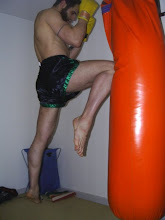
Silat began spreading in the seventh century AD but there are no records on its origin. However, it was acknowledged as a Malay Martial Art although there are influences by the Chinese and Indian cultures as well as other ethnic groups. Silat was used as a combat art as well as a folk dance when the Muslim spread through the Malay archipelago in the fourteenth century. It was developed in Brunei, Indonesia and Malaysia as an art to liberate themselves from the Colonials such as the Dutch and the British.
In the West Sumatra silat was known as silek and was the oldest men's tradition to perform the Minangkabau folk dance of randai. In Malaysia and Brunei, one form of silat known of silat pulut and silat cakak.
There are many forms of silat such as Pencak, Cekak, Sendeng, Keris Lok and Gayong Fatani and Gayong. It would be quite difficult to list out the official type of silat, as there are at least 150 types of silat but out of these types of silat, Silat Melayu is consider one of the few oldest forms of silat.
Most of the silat schools have few objectives and the most common one is “The art of knowing one self’. Silat consists of 2 forms, the soft and the hard which is also known as Flower (Bunga) and Fruit (Buah). Flower is normally used to confuse the opponent where Fruit is the strike and each schools will have both form applied in their martial arts but it really depends on the amount of the focus.
Image taken from: tuina.com.au












The exact time or era of when did Silat was invented is indeed still unclear. But it is certain that the culture of Malay is rooted and beginning from the island of Sumatera (Indonesian Malay) and so did with Silat as the oldest record indicate it.
ReplyDeleteSilat was created and develop in the island of Sumatera and Java (now in Indonesia), and then spread to the rest of what is now Malay world. Statues and stone inscriptions about Silat were found in the island of Java and still exist today.
The art was spread mainly through immigration from Indonesian islands of Java, Sumatera, and Sulawesi to the Malay peninsula which had been going for centuries, along with the expansion of ancient Kingdom of Srivijaya and Majapahit to the rest of the Malay world.
It's true that Silat is now shared by Malay nations and all claim it as their common heritage. But the origin of Silat is undoubtedly belong to Indonesian Malay.
RTZ.